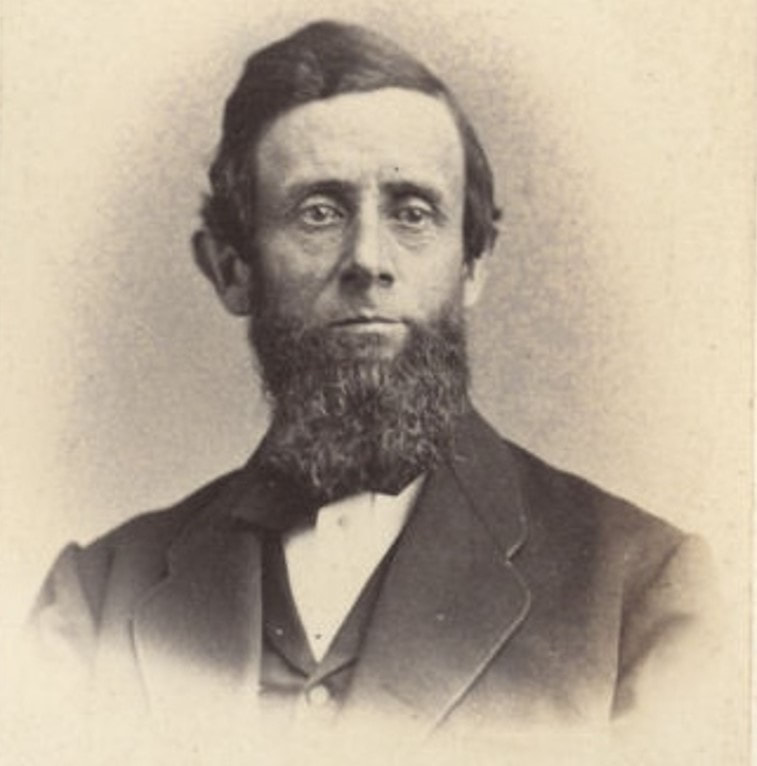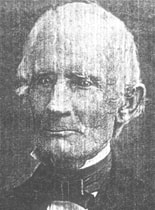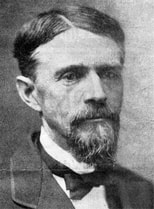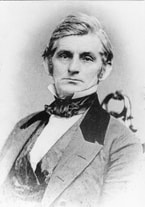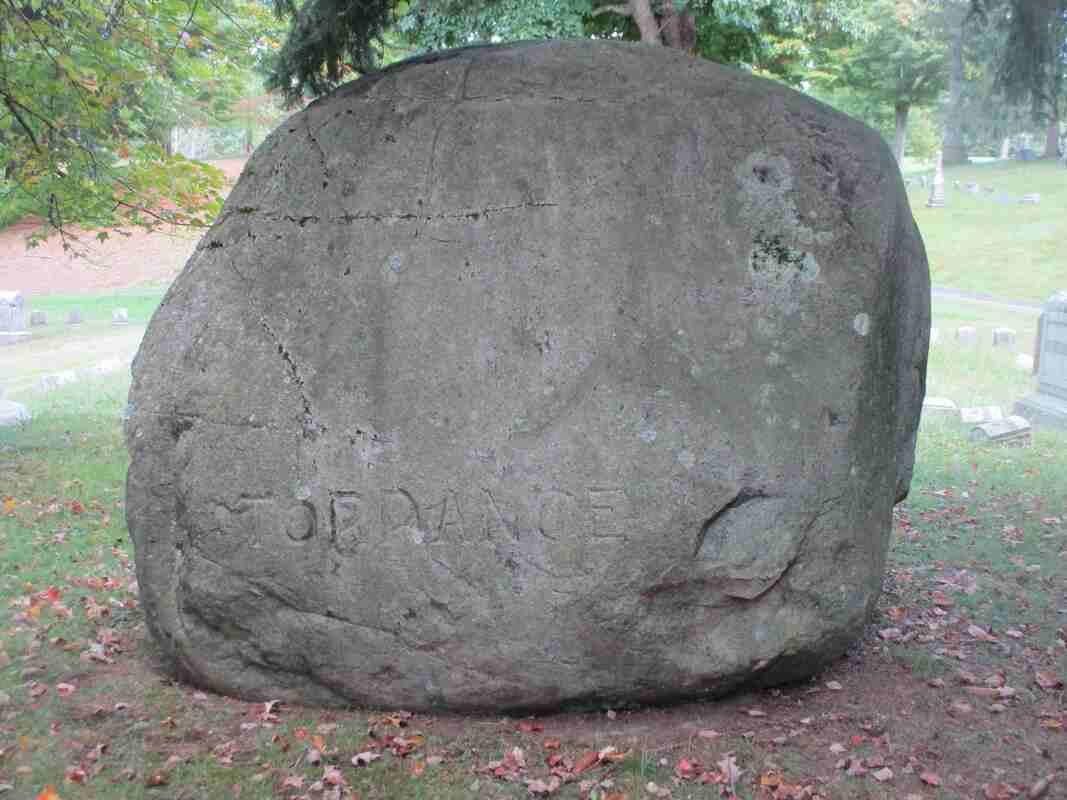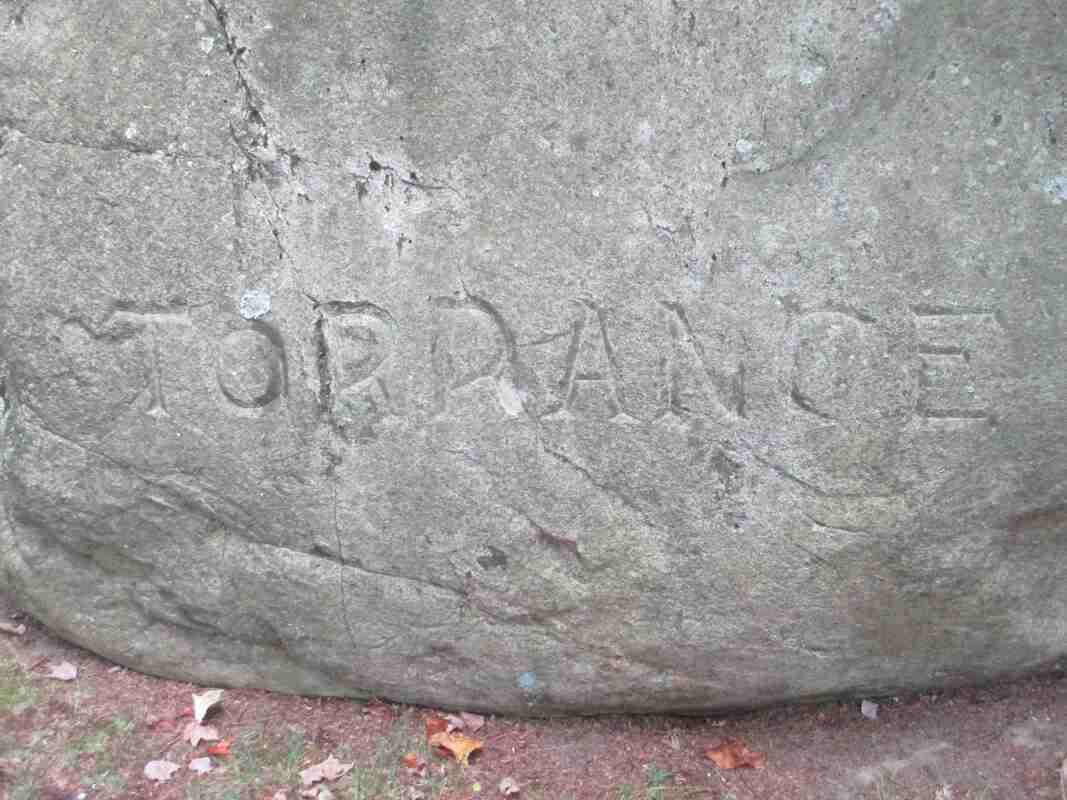HISTORY
When the first settlers from New England arrived in what is now Gowanda, deaths were followed by burial on private properties. There were no public burying grounds until members of the community came together and began interment of the deceased in a clearing some 200 yards west of Buffalo Street on the Isaac Aldrich farm, between what are now Union Street and Bader Avenue. Today, the exact location of this graveyard is unknown.
As the community grew, the need arose for new cemeteries, and a site was chosen on the hill overlooking the valley from the west. Thus, the Pioneer Methodist, or Sisson Cemetery was established in 1830, along the main stage route between Buffalo and Jamestown. That route today is known as Maltbie Road. Later, other cemeteries were established, including the Broadway Cemetery (1836) to the south of the village, Pine Grove Cemetery (1856) in the Rosenburg district to the east, and the Buffalo Street Presbyterian Cemetery to the north at the foot of Sand Hill.
In 1863, some prominent citizens of the village, by then known as Gowanda, admiring a piece of land above the valley to the east, approached the owner, pioneer merchant Ralph Plumb. He agreed to cooperate in their plan to establish a new cemetery. Two years after Mr. Plumb's death in 1865, his son, Joseph Hudson Plumb, offered 20 acres of ground covered with fragrant pine trees.
A meeting on June 1, 1867, at the law office of Cyrenius Chapin Torrance, resulted in the formation of the Gowanda Pine Hill Cemetery Association, with Joseph H. Plumb as chairman, and C. C. Torrance as secretary. Six trustees were chosen, including Messrs. Plumb and Torrance, John E. Morse, James H. McMillen, Charles Rollinson, and Porter Welch. They resolved to hold annual meetings on the first Saturday in May. The proceedings were then certified by Elisha W. Henry, Justice of the Peace, on June 4, 1867.
The first burial in the new cemetery was that of Orville Starr on October 9, 1867, in Section C, Lot 27. Over the next fifteen years, nearly 400 burials occurred at Pine Hill, including 110 re-interments from other cemeteries.
On December 3, 1869, Joseph H. Plumb and his wife deeded the original 20 acres to the cemetery association for the sum of one dollar. Their intention was expressed in these words: “This land is conveyed for the purpose of a cemetery or burial place, and for no other use or purpose, and upon the express condition that the proceeds from the sale of lots, after reimbursing the stock holders for their advances, shall be expended to properly laying out and improving the grounds, and when so laid out and improved, the balance of the receipts from the sale of lots shall constitute a fund, the interest of which shall be used for all time to come in keeping the grounds in order.” Later acquisitions brought the total acreage to 24.
In 1897, a water works system was proposed to provide a water source for maintaining the cemetery grounds. Funded by lot owners with liberal contributions from Joseph H. Plumb and Franklin Day Locke, a prominent Buffalo attorney with local roots, additional acreage to the north was purchased. A 13-foot high dam was built across a ravine, impounding over a million gallons of water. This was above the railroad tracks and nearly behind the former Moose Club on Buffalo Street. Using a hydraulic ram, water was pumped more than 1,000 feet, at an elevation rise of 135 feet, to a 50,000 gallon concrete reservoir. From there, water was distributed through smaller pipes to all parts of the grounds. This system has long been abandoned, but traces of the piping system are still visible in certain parts of the cemetery.
Burials have continued at Gowanda Pine Hill Cemetery for more than 150 years. Today, approximately 4,143 people lie interred in its beautiful confines. Careful maintenance and management of the grounds have kept the pledge of the original founders alive. In 2002, an undeveloped area at the north end of the cemetery was logged off, graded, and marked out as new Section J, which will provide burial space for decades to come. A Cremation Garden was laid out along with an artisan-created concrete meditation bench paid for by the Friends of Gowanda Pine Hill Cemetery, and Gowanda native Brett Hawkins, Sr.
Many stately trees grace the grounds of the cemetery, including several oaks, maples and hemlocks, as well as a number of white pines which gave the cemetery its name. A rare sassafras tree towering more than 50 feet high is located in the central portion of the cemetery. The cemetery's crowning touch is a decorative aluminum arch spanning the main entrance, which was installed in 2006.
The late Theodore F. Welch, a former member of the cemetery's Board of Trustees, wrote many years ago about the mission of the cemetery's trustees, carried down from his time to the present, “To insure therefore that it shall never become neglected and unsightly, that it shall always be cared for as it now is, always beautiful, restful to the eye, peaceful to the thought, it is necessary that it shall continue to have the interest, solicitude and gifts of the lot owners and the public generally.”
As the community grew, the need arose for new cemeteries, and a site was chosen on the hill overlooking the valley from the west. Thus, the Pioneer Methodist, or Sisson Cemetery was established in 1830, along the main stage route between Buffalo and Jamestown. That route today is known as Maltbie Road. Later, other cemeteries were established, including the Broadway Cemetery (1836) to the south of the village, Pine Grove Cemetery (1856) in the Rosenburg district to the east, and the Buffalo Street Presbyterian Cemetery to the north at the foot of Sand Hill.
In 1863, some prominent citizens of the village, by then known as Gowanda, admiring a piece of land above the valley to the east, approached the owner, pioneer merchant Ralph Plumb. He agreed to cooperate in their plan to establish a new cemetery. Two years after Mr. Plumb's death in 1865, his son, Joseph Hudson Plumb, offered 20 acres of ground covered with fragrant pine trees.
A meeting on June 1, 1867, at the law office of Cyrenius Chapin Torrance, resulted in the formation of the Gowanda Pine Hill Cemetery Association, with Joseph H. Plumb as chairman, and C. C. Torrance as secretary. Six trustees were chosen, including Messrs. Plumb and Torrance, John E. Morse, James H. McMillen, Charles Rollinson, and Porter Welch. They resolved to hold annual meetings on the first Saturday in May. The proceedings were then certified by Elisha W. Henry, Justice of the Peace, on June 4, 1867.
The first burial in the new cemetery was that of Orville Starr on October 9, 1867, in Section C, Lot 27. Over the next fifteen years, nearly 400 burials occurred at Pine Hill, including 110 re-interments from other cemeteries.
On December 3, 1869, Joseph H. Plumb and his wife deeded the original 20 acres to the cemetery association for the sum of one dollar. Their intention was expressed in these words: “This land is conveyed for the purpose of a cemetery or burial place, and for no other use or purpose, and upon the express condition that the proceeds from the sale of lots, after reimbursing the stock holders for their advances, shall be expended to properly laying out and improving the grounds, and when so laid out and improved, the balance of the receipts from the sale of lots shall constitute a fund, the interest of which shall be used for all time to come in keeping the grounds in order.” Later acquisitions brought the total acreage to 24.
In 1897, a water works system was proposed to provide a water source for maintaining the cemetery grounds. Funded by lot owners with liberal contributions from Joseph H. Plumb and Franklin Day Locke, a prominent Buffalo attorney with local roots, additional acreage to the north was purchased. A 13-foot high dam was built across a ravine, impounding over a million gallons of water. This was above the railroad tracks and nearly behind the former Moose Club on Buffalo Street. Using a hydraulic ram, water was pumped more than 1,000 feet, at an elevation rise of 135 feet, to a 50,000 gallon concrete reservoir. From there, water was distributed through smaller pipes to all parts of the grounds. This system has long been abandoned, but traces of the piping system are still visible in certain parts of the cemetery.
Burials have continued at Gowanda Pine Hill Cemetery for more than 150 years. Today, approximately 4,143 people lie interred in its beautiful confines. Careful maintenance and management of the grounds have kept the pledge of the original founders alive. In 2002, an undeveloped area at the north end of the cemetery was logged off, graded, and marked out as new Section J, which will provide burial space for decades to come. A Cremation Garden was laid out along with an artisan-created concrete meditation bench paid for by the Friends of Gowanda Pine Hill Cemetery, and Gowanda native Brett Hawkins, Sr.
Many stately trees grace the grounds of the cemetery, including several oaks, maples and hemlocks, as well as a number of white pines which gave the cemetery its name. A rare sassafras tree towering more than 50 feet high is located in the central portion of the cemetery. The cemetery's crowning touch is a decorative aluminum arch spanning the main entrance, which was installed in 2006.
The late Theodore F. Welch, a former member of the cemetery's Board of Trustees, wrote many years ago about the mission of the cemetery's trustees, carried down from his time to the present, “To insure therefore that it shall never become neglected and unsightly, that it shall always be cared for as it now is, always beautiful, restful to the eye, peaceful to the thought, it is necessary that it shall continue to have the interest, solicitude and gifts of the lot owners and the public generally.”
Moving the Torrance Boulder
Thurmont, Md.
March 27, [19]50
Hello Eber -
Would like to make a little change in your history of the moving of the Torrance boulder.
A[lfred]. H. (Doc) Fess dug out the boulder, jacked it up, put 2 hewed beams under it, and made a cradle like an overtruss bridge. Timbers were beech or oak, 12 inches square and about 36 ft. long, bolted and braced with ¾ in. rods. Fess, after loading boulder onto the frame work, hooked on the frame, after putting large rollers under it, and started up the hill towards the four corners, something gave away and the outfit rolled back below where it started from, and nearly tipped over.
After some time, Mr. [Jared] Sidney Torrance hired Mr. William Smith, Uri (Ti) Clark and his horse (Dutch) and my Brother Burt and I, and we and no one else moved the boulder. Three different men have tried to tell me that they moved the stone, but after I told them what kind of a liar they was, they admitted they were liars.
The capstan on which the rope was wound belonged to Wm. Smith, also rollers, etc.
After we moved the stone to the four corners and turned east toward Gowanda, we were afraid that the stone might run down the hill past Dana Stafford's farm and make us trouble. We went to the G. A. [Gowanda Agricultural] Works wood shop and cut out some wheels of maple, 2 in. plank, by putting enough plank together we had solid wood wheels, 18 in. in diameter with a 12 face. We borrowed a 6 in. steel shaft of Mr. Keyes, placed it in front end of our timbers, with the wheels on the end like wagon wheels. We let down the rear end and let it drag.
My Brother and I with fence posts on our shoulders with end on ground, acted as brakes to regulate movement down hill, it worked real good. One little thing I remember was the name of the man who was foreman on the erection of the Catt. Creek bridge, Fred Foote. Frank Kammerer thought it a great joke to introduce John Schoos, Mr. Foote, and May Stockings. (Ti) Clark sat under the capstan and tended the rope as it wound around, the horse went around on the sweep, horse was kept barefooted, so calks [or cleats] on horseshoes would not cut rope. Burt and I carried plank, rollers, etc. Wm. Smith was boss and he made a real good one.
While we were moving down Dana Stafford's hill, Mr. and Mrs. Torrance came up to see how we were moving. Mrs. Torrance found a real nice large bunch of grass to sit on. She moved quick, it was an ant nest.
When we got where the boulder rests now and was letting it down to the ground, the jack screws slipped and caught Smith's and my feet under the timber. We couldn't get away as our feet were pushed so deep into ground we couldn't pull them out. We had no relief until Burt and Clark raised the timber again.
This is a true picture of the whole affair and don't let anyone tell you they were on the job.
Fred E. Hawkins
March 27, [19]50
Hello Eber -
Would like to make a little change in your history of the moving of the Torrance boulder.
A[lfred]. H. (Doc) Fess dug out the boulder, jacked it up, put 2 hewed beams under it, and made a cradle like an overtruss bridge. Timbers were beech or oak, 12 inches square and about 36 ft. long, bolted and braced with ¾ in. rods. Fess, after loading boulder onto the frame work, hooked on the frame, after putting large rollers under it, and started up the hill towards the four corners, something gave away and the outfit rolled back below where it started from, and nearly tipped over.
After some time, Mr. [Jared] Sidney Torrance hired Mr. William Smith, Uri (Ti) Clark and his horse (Dutch) and my Brother Burt and I, and we and no one else moved the boulder. Three different men have tried to tell me that they moved the stone, but after I told them what kind of a liar they was, they admitted they were liars.
The capstan on which the rope was wound belonged to Wm. Smith, also rollers, etc.
After we moved the stone to the four corners and turned east toward Gowanda, we were afraid that the stone might run down the hill past Dana Stafford's farm and make us trouble. We went to the G. A. [Gowanda Agricultural] Works wood shop and cut out some wheels of maple, 2 in. plank, by putting enough plank together we had solid wood wheels, 18 in. in diameter with a 12 face. We borrowed a 6 in. steel shaft of Mr. Keyes, placed it in front end of our timbers, with the wheels on the end like wagon wheels. We let down the rear end and let it drag.
My Brother and I with fence posts on our shoulders with end on ground, acted as brakes to regulate movement down hill, it worked real good. One little thing I remember was the name of the man who was foreman on the erection of the Catt. Creek bridge, Fred Foote. Frank Kammerer thought it a great joke to introduce John Schoos, Mr. Foote, and May Stockings. (Ti) Clark sat under the capstan and tended the rope as it wound around, the horse went around on the sweep, horse was kept barefooted, so calks [or cleats] on horseshoes would not cut rope. Burt and I carried plank, rollers, etc. Wm. Smith was boss and he made a real good one.
While we were moving down Dana Stafford's hill, Mr. and Mrs. Torrance came up to see how we were moving. Mrs. Torrance found a real nice large bunch of grass to sit on. She moved quick, it was an ant nest.
When we got where the boulder rests now and was letting it down to the ground, the jack screws slipped and caught Smith's and my feet under the timber. We couldn't get away as our feet were pushed so deep into ground we couldn't pull them out. We had no relief until Burt and Clark raised the timber again.
This is a true picture of the whole affair and don't let anyone tell you they were on the job.
Fred E. Hawkins
Eber L. Russell (1881-1968) of Perrysburg, NY was a local historian who wrote extensively about the history of Gowanda and vicinity and was an amateur archaeologist. This letter was found among his correspondence given to the Gowanda Area Historical Society in August 2023, by his grandson, David Russell. The Torrance boulder, estimated to weigh up to 30 tons, is in Section B, Lot 10.
